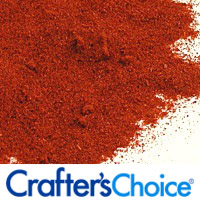You've probably noticed that most cosmetics and soap bases are a pretty neutral white or cream color. Two types of ingredients can color of your product: an ingredient that happens to change the color or a color additive. Learn the difference between these two things, for both your product labeling and regulatory compliance.

You’ve probably noticed that most cosmetics and soap bases are a pretty neutral white or cream color. Generally there are two types of ingredients that can change the color of your product: an ingredient that happens to change the color or a color additive. It’s very important to understand the difference between these two things, for both product labeling and regulatory compliance.
A Little History
The first synthetic organic dye (mauve) was discovered in 1856. By 1900, artificially-colored foods proliferated in the marketplace. In some cases, dyes were toxic or poisonous, or they were used to hide inferior or defective foods (such as “strawberry jam” that contained red dye and flavoring – but no strawberries). In 1906, Congress stepped in with the first version of the Food and Drugs Act which limited certain uses of color additives and the USDA was given enforcement authority.
In 1927, the FDA was given the responsibility for enforcing the 1906 Food and Drugs Act and by 1931 there were 15 colors listed as approved for use in food. The Federal Food, Drug and Cosmetic Act of 1938 increased the scope and authority of the FDA. Amongst other things, it required certifcation of certain color additives and included regulation of cosmetics and medical devices.
A 1958 Halloweeen health scare where many children got sick eating an orange candy containing FD&C Orange #11 brought about the Color Additive Amendments of 1960, which resulted in the FDA reviewing over 200 color additives then in use (of those, about half were subsequently “listed” and allowed for use). Later legislation and regulation established chemical specifications for allowed color additives and their specific uses.
An Ingredient That Happens To Change The Color
An ingredient that happens to change the color is one that is included in the product for a purpose other than coloring the product, but has a “side-effect” of changing the product’s final color. Herbs or extracts often change the finished product color, as do some essential or fragrance oils.
In the ingredient declaration for the product, an ingredient that happens to change the color is included with all other ingredients in descending order of predominance.
Color Additives
Color additives, on the other hand, are ingredients that are specifically added to change the color of the product. The FDA maintains two lists of approved color additives: those that must be certified by the FDA and those that are exempt from the certification process. In order to sell a “Certified” color additive, the manufacturer of the color additive must have each batch certified by the FDA as meeting the required specifications. Certified colors are recognizable by their names, which start with “FD&C” or “D&C” followed by the color name and number. Colors that don’t have to be certified are generally plant or mineral based.
The FDA color additives lists[1] include the name of the color additive, whether it can be used in the eye area, if it can be used “generally”, whether it is for “external use only”, and if there are any specific limitations. For example, mica and titanium dioxide are approved for use in the eye area, for general use (including lipstick) and for external use, while ultramarines can be used around the eyes or externally, but they are not approved for general use (including lipstick). [Note: “external use” means it is “applied only to external parts of the body and not to the lips or any body surface covered by mucous membranes”.]
In order to be used in a cosmetic, a color additive must: be approved by the FDA for use in cosmetics; AND ONLY be used in products for which is has been approved; AND be listed in the ingredient declaration by the approved name.
The Product Ingredient Declaration
As noted above, ingredients which happen to change the color of a product and are included in the product for some purpose other than coloring, should be listed in the general ingredient declaration. If they are included at less than 1%, they can be listed in any order after ingredients at 1% or more.
Color additives have an alternative way of being included in the ingredient declaration. While they may be listed in the same manner as other ingredients (in descending order of predominance or, if less than 1%, listed in any order following the ingredients at 1% or more), color additives MAY be listed at the end of the ingredient declaration after all other ingredients, regardless of the amount used.